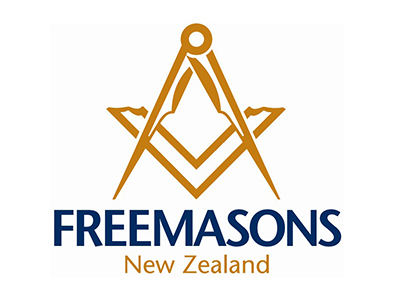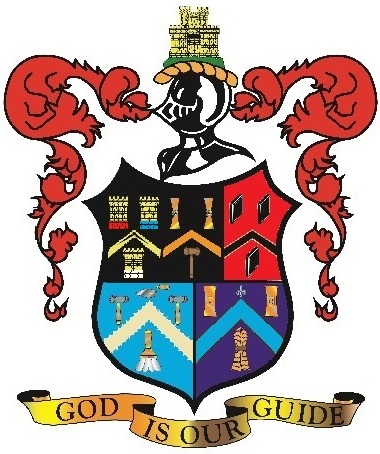Other 'masonic' orders
During and following the development of Craft Freemasonry, there have been formed many additional 'masonic' Orders and Organisations.
While these other Orders are separate from Craft Freemasonry they almost all require membership of the Craft as a basic qualification for admission, and some have additional membership requirements. Certain of these Orders are related to Craft Freemasonry, and extend the legends and moral lessons introduced in its ceremonies.
Within New Zealand Freemasonry, one of these Orders, known as the Royal Arch, is, for historical reasons, most closely associated with Craft Freemasonry.
The following is a list of other Orders and Organisations active in New Zealand. Where information has been agreed with the order concerned, the link provides some details of that organisation.
Orders and Organisations active in New Zealand
(click on the tabs to expand for more information)
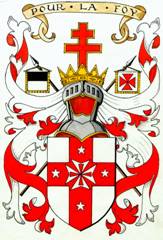
United Great Priory in New Zealand
Membership of the Order is limited to members of a Craft Lodge, who have also taken the Royal Arch degree, and profess the Christian faith.
The Order is grouped in 4 Districts with 31 Preceptories and Priories comprising in turn around 600 members in New Zealand.
The object of this Order is to perpetuate, or preserve a memorial of, the chivalry of the knights of the Crusades, and also to promote the aims of benevolence and charity in New Zealand.
There are 2 principal degrees with one small intermediate portion. Not surprisingly the actual form of our ritual differs around the country reflecting either the Preceptory and Priories English or Scottish heritage.
The actual degrees are the Knight Templar and the Knight of Malta including the Knight of St Paul or Mediterranean Pass. The messages of the degrees strongly reflect the Templar heritage of the Order with the first being based on the early days of the Order and the later around the period of its demise and the reception of many Knights by the Hospitallers.
The uniform essentially follows that of the Knights of old with original differences in a limited extent between the original English or Scottish forms. Lounge suits are worn to all meetings.
Knights wear a white tunic reaching to the knees over which is worn a calf length white mantle. A red passion cross extends for the full width and length of the front of the tunic and a black sash or cordon is worn from the right shoulder to left hip. A heavy leather belt knotted at the front is often worn from which a sword is attached being an integral part of the dress. A cap of red velvet is worn.

The Order of the Secret Monitor
Beginnings
The first reference to the Order of the Secret Monitor is known to have originated in Holland in or about 1778 but became popular in America as part of the Allied Masonic Degrees.
In 1875 the Order was introduced to England from America by Dr. I Zacharie. At this time it consisted of only one degree. In 1887 a Grand Council was formed in England and a further two degrees were added.
For many years both the Grand Council in England and the Allied Masonic Degrees conferred the degrees of the Secret Monitor. In 1931 Colonel Charles Warren Napier-Clavering became the head of both Orders and an Articles of Agreement was signed which transferred sole rights of the Order to The Grand Council of the Order of the Secret Monitor.
The Order was introduced to New Zealand after officers of the New Zealand Expeditionary Force were inducted into Zacharie Conclave No. 9 in London in 1919. On their return to New Zealand these Brethren obtained a warrant to form Aotearoa Conclave No.44 under the English Constitution. This was to become Aotearoa No.1 under the New Zealand Constitution.
The Order was administered from England until 1982 when the first New Zealand Grand Council, subsequently changed to Grand Conclave, was formed. At the time of the new Grand Council was formed, all but two Conclaves changed their allegiance to New Zealand. They were Remuera and Thames who still operate under their English Warrants.
There are 30 Conclaves operating under the New Zealand Constitution with 800 members.
Membership
Membership is open to those who have taken the Master Masons degree.
The individual assemblies are called Conclaves and are ruled by a Supreme Ruler, who as in other Orders of Freemasonry is elected and installed annually.
The Order has three degrees:
The First or “Secret Monitor” degree or ceremony of “induction”.
The Second or “Princes” degree or ceremony of “admission”.
The Third degree or Installation of the Supreme Ruler.
Secret Monitor or First Degree:
This is the story of the friendship which existed between David and Jonathan, based upon the Book of Samuel in the VSL. During the ceremony the candidate is instructed in a certain course of action to be adopted when a Brother is about to do anything which might prove injurious to himself and it teaches a beautiful lesson in friendship and fidelity.
Princes or Second Degree:
The Admission ceremony is also derived from the Book of Samuel and tells how Saul sought the life of David. It further relates an interesting legend of the methods contrived to thwart the efforts of the jealous King.
Supreme Ruler or Third Degree:
This deals with the ceremony of installation of the Supreme Ruler.
One of the most important aspects of the order is the inclusion in the list of officers of “Visiting Deacons”. The Visiting Deacons are charged with a special function peculiar to this Order. They are required to keep in constant contact with their allocated brethren, and afford assistance and support (via the Conclave) to a Brother in time of sorrow and distress. They should also search out and warn him if he be exposed to danger, secret or apparent.
In some Conclaves the Ladies are invited to attend all meetings where some form of entertainment is provided for them, and participate in refectory proceedings.
Many Conclaves also record the names of their Widows on their notice papers who are then contacted by the Visiting Deacons as a constant check on their welfare.
Thus the Order of the Secret Monitor can rightly be regarded as the Order of Friendship.
Right Worthy Brother Phil Brooke Past Grand Guide, Grand Recorder
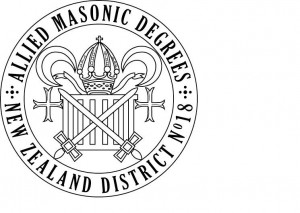
The Order of the Allied Masonic Degrees
Membership of the Order is limited to members of a Craft Lodge, who have also taken the Mark Master and Royal Arch degrees.
The Order comprises five rituals which did not fit in with the mainstream degrees adopted by other Masonic Orders.
It is governed from Mark Mason’s Hall, London, but is locally administered by the District Grand Council for New Zealand.
There are six Councils in New Zealand, based in Auckland, Hamilton, Napier, Palmerston North, Christchurch, and Dunedin, and meet quarterly.
THE FIVE DEGREES
- St Lawrence the Martyr. Candidates are admitted as Brethren of the Order in this Degree which tells the story of St Lawrence, put to death by the Romans because of his love for the poor and infirm. Regalia consists of a bar of miniature jewels, (or a composite jewel).
- Knights of Constantinople. The Emperor Constantine is concerned at the arrogance of his knights, so takes steps to teach them humility. The messages in this short degree are relevant to all Freemasons, and all mankind.
- Grand Tyler of King Solomon. A diligent craftsman finds his life endangered due to the carelessness of King Solomon and his Council. We are taught to show mercy and never make hasty decisions. This Degree stresses the importance of the Tyler in any Lodge.
- Red Cross of Babylon. This is the English version and is only worked within the Allied Degrees. While different from the Royal Arch version, everything ends up the same.
- Grand High Priest. A great deal involves early parts of the Old Testament. Abraham and the ancient Kings come into the ceremony, as well as an early High Priest. The candidate receives something of great value during the ceremony, and will participate in a meaningful way in the fellowship of the Brethren present.
 The Royal Order of Scotland
Introduction
The Royal Order occupies a branch of the Masonic ‘family tree’ alongside the Order of the Holy Royal Arch, the Order of the Secret Monitor, and several others. Unlike most of the others there is no direct connection to a higher branch such as the Order of Knights Templar or the Red Cross of Constantine, so the Royal Order stands alone.
History
Records of the Grand Lodge of England show that the Order was active in London in 1741, and in 1750 a Charter was issued to a William Mitchell to work the degree at The Hague. Mitchell moved to Edinburgh in 1752 or 1753 and used the Charter to establish a Provincial Grand Lodge of the Order there. In 1767 that body became the Grand Lodge of the Royal Order of Scotland. Thus the Order can claim seniority over every other Masonic Order except the Craft. It has existed in New Zealand since 1919.
The Traditional History of the Order, which must not be mistaken for actual history, represents the First Degree as dating from the time of King David I of Scotland, and the Second Degree as instituted by King Robert the Bruce on the battlefield of Bannockburn, on the 24th of June 1314, to commemorate the valour of a band of Templar Knights who had rendered him signal aid in that great victory. These Templars were refugee survivors who had sought safety in Scotland after the downfall of the Order of the Temple and the murder in Paris of the Grand Master Jacques de Molay in March of that year.
Structure
The Grand Master of the Royal Order is the hereditary King of Scots. While there is no King of Scots the head is the Deputy Grand Master and Governor of the Order, currently Sir Archibald Donald Orr-Ewing, 6th Baronet of Ballikinrain and Lennoxbank.
The Order consists of the Grand Lodge in Edinburgh and 88 Provincial Grand Lodges throughout the world. The Provincial Grand Lodges are the basic units of the Order, there are no Lodges.
There are four Provincial Grand Lodges in New Zealand: NZ North in Auckland, NZ Central in Wellington, Canterbury in Christchurch, and NZ South in Dunedin. The Provincial Grand Lodges are governed directly by the Grand Lodge in Scotland. The Order in New Zealand comprises about 150 members.
There are two degrees: Brother of Heredom of Kilwinning and Knight of the Rosy Cross. The former is conferred in Provincial Grand Chapter, and Brothers of Heredom are "promoted" to the Knighthood of the Rosy Cross in Provincial Grand Lodge.
Membership
The essential and universal qualifications for applicants are:
The Royal Order of Scotland
Introduction
The Royal Order occupies a branch of the Masonic ‘family tree’ alongside the Order of the Holy Royal Arch, the Order of the Secret Monitor, and several others. Unlike most of the others there is no direct connection to a higher branch such as the Order of Knights Templar or the Red Cross of Constantine, so the Royal Order stands alone.
History
Records of the Grand Lodge of England show that the Order was active in London in 1741, and in 1750 a Charter was issued to a William Mitchell to work the degree at The Hague. Mitchell moved to Edinburgh in 1752 or 1753 and used the Charter to establish a Provincial Grand Lodge of the Order there. In 1767 that body became the Grand Lodge of the Royal Order of Scotland. Thus the Order can claim seniority over every other Masonic Order except the Craft. It has existed in New Zealand since 1919.
The Traditional History of the Order, which must not be mistaken for actual history, represents the First Degree as dating from the time of King David I of Scotland, and the Second Degree as instituted by King Robert the Bruce on the battlefield of Bannockburn, on the 24th of June 1314, to commemorate the valour of a band of Templar Knights who had rendered him signal aid in that great victory. These Templars were refugee survivors who had sought safety in Scotland after the downfall of the Order of the Temple and the murder in Paris of the Grand Master Jacques de Molay in March of that year.
Structure
The Grand Master of the Royal Order is the hereditary King of Scots. While there is no King of Scots the head is the Deputy Grand Master and Governor of the Order, currently Sir Archibald Donald Orr-Ewing, 6th Baronet of Ballikinrain and Lennoxbank.
The Order consists of the Grand Lodge in Edinburgh and 88 Provincial Grand Lodges throughout the world. The Provincial Grand Lodges are the basic units of the Order, there are no Lodges.
There are four Provincial Grand Lodges in New Zealand: NZ North in Auckland, NZ Central in Wellington, Canterbury in Christchurch, and NZ South in Dunedin. The Provincial Grand Lodges are governed directly by the Grand Lodge in Scotland. The Order in New Zealand comprises about 150 members.
There are two degrees: Brother of Heredom of Kilwinning and Knight of the Rosy Cross. The former is conferred in Provincial Grand Chapter, and Brothers of Heredom are "promoted" to the Knighthood of the Rosy Cross in Provincial Grand Lodge.
Membership
The essential and universal qualifications for applicants are:
- Membership of the three degrees of Craft Freemasonry
- Five years or more as a Master Mason in a St John’s Lodge
- Profession of the Trinitarian Christian faith.
- Brother of Heredom: An apron with a scarlet border, a scarlet cordon or baldric worn over the left shoulder, and the badge of the Order on the left breast of the jacket.
- Knight of the Rosy Cross. An apron with a green and scarlet border and, in addition to the scarlet baldric and breast badge, a green baldric worn over the right shoulder. Knights also wear a green and gold strap around the upper left arm with the words ‘Virtute et Silentio’ meaning power and silence.
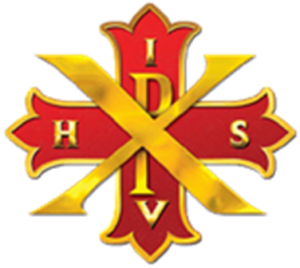
The Masonic and Military Order of The Red Cross of Constantine and the Orders of The Holy Sepulchre and of St John the Evangelist
The Order of the Red Cross of Constantine as worked today was first documented in 1865, when its constitution was formally established by Robert Wentworth Little in England. The Order worked in New Zealand under the English Grand Imperial Conclave until 11th August 2012 when the New Zealand Grand Imperial Conclave was formed.
To become a Member of the Order of the Red Cross of Constantine a Brother must be or have been a Royal Arch Mason and subscribe to a belief in the Christian religion as revealed in the New Testament
There are three degrees worked namely:
1 Knight of the Red Cross of Constantine
The degree relates the legend of Emperor Constantine's conversion to Christianity after the Battle of Saxa Ruba in 312 AD when he saw a Cross in the sky with the motto "In Hoc Signo Vinces" In this sign you shall conquer
2 Knight of the Holy Sepulchre
Christian tradition tells us that St. Helena, the mother of Constantine the Great, discovered the True Cross on which Christ was crucified along with two others. It was by Divine intervention that she was able to discern the True Cross from the others.
3 Knight of St. John the Evangelist
This degree is always conferred along with the preceding one and together make up the internal appendant degrees of the Conclave system. The ritual deals with the tradition of a certain discovery made at the ruins of the first Temple and the subsequent formation of the Knights of St. John.
Most Illustrious Grand Sovereign M.Ill Kt J. D. More JP GCC
Dep. Grand Sovereign Rt Ill Kt P Rhode
Grand Recorder V Ill Kt B Jones
The Worshipful Society of Free Masons
Rough Masons, Wallers, Slaters, Paviors, Plaisterers and Bricklayers
(The Operatives) Region: New ZealandRegional Clerk R Jaray Home Tel: (0064) 4 293 2500 EMail: robertsjaray@gmail.com
ABOUT THE SOCIETY
The Society is a regular body of speculative Freemasons, and is restricted to Master Masons who are also Royal Arch Masons.
The object of the Society is to perpetuate, or preserve a memorial of, the practices of operative Free Masons, existing prior to , or continuing independently of, speculative Freemasonry, according to certain repute.
Certain elements in the practice of the “ Operatives”, as they are known, however, recall former practice. Persons intending to learn the craft of stonemasonry could do so in two principal ways. They could pick up the technique by assisting and watching a more experienced workman, a process known in the building trade as “Sitting next to Nellie”. Alternately they could be indentured, that is to say, enter into an apprenticeship deed, with mutual obligations of apprentice and master. The latter method is reflected in Operative practice and, on joining the Society the candidate becomes an Indentured Apprentice.
There are seven degrees. The first four degrees are conferred in an Assemblage of lodges IVº to Iº, each degree beyond the first being conferred when the assemblage is appropriately opened as a Lodge of that degree. The Vº, VIº and VIIº are conferred in separate Lodges of those degrees.
In New Zealand there are five Assemblages the contact Clerks being as follows:
Albert Barracks Auckland RV de Vera, EMail: richardjdevera@gmail.com
Napier Quarries Napier J Heron Email: jheron@xtra.co.nz /p>
Belmont Quarries Petone P Brooke Email: philbrooke@xtra.co.nz
Wakefield Quarries Nelson Dark
Halswell Quarries Christchurch R Sutherland Email: rongvald.sutherland@gmail.com
For further information refer to the Society’s web page Here

The Societas Rosicruciana in Anglia (SRIA) whose Headquarters in North Yorkshire, England, is governed internationally by The Supreme Magus and his High Council. It is divided into Provinces, each in turn governed by a Chief Adept.
SRIA Colleges can be found in England, Australia, New Zealand, Canada, Wales, France and Holland.
The Society Rosicrucian in Scotland (SRIS), is a Sister Society, with full visiting and recognition.
The Chief Adepts are responsible for the Colleges within their respective Provinces. Each College is presided over by a Celebrant and his officers elected or appointed annually.
A member of the Society (called a frater, Latin for ‘brother’, pl. fratres) aspires to progress through a series of nine grades, each having its own colourful and impressive ritual ceremony, in three distinct Orders.
A candidate must be a Master Mason and profess Christianity, is required to be proposed and seconded by members of the Society and is elected by ballot.
Through regular and graduated steps, the members of the Society are guided from the initial effort to the final goal. Each student ought to possess those aspirations that can be developed during the training in the Fraternity.
The Society’s mission is to provide mutual support and encouragement in unraveling life’s profound mysteries and uncovering Nature’s secrets. We aim to facilitate the study of the philosophy rooted in the Kabbalah and the teachings of Hermes Trismegistus.
The Province of New Zealand
Chief Adept:
Suffragan:
Provincial Secretary:
The New Zealand Province has four Colleges –
Ashmolean College
Auckand
Felkin College -
Hastings
Sirius College -
Wellington
Christchurch College -
Christchurch
Provincial Secretary:
V,W.Fra Richard Illingworth VII °
+64 27 4745279
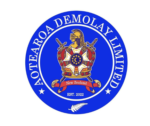
A New Zealand DeMolay Renaissance
In 2011, a group of New Zealand immigrants, united by their shared membership in the International Order of DeMolay, sought to recreate the camaraderie and values they had experienced in their youth. Frustrated by the absence of a DeMolay presence in their new home, they turned to the Freemasonry lodges, hoping to find a kindred spirit. Through word-of-mouth and diligent networking, they connected with DeMolay members from various chapters and countries, forming a growing community across the North and South Islands. In 2022, they formalised their efforts, registering Aotearoa DeMolay Limited as a non-profit association.What is DeMolay?
DeMolay is a fraternity for young men ages 12-21. It's an international organisation with chapters all over the world. DeMolay chapters have business meetings to plan educational events, fundraisers, service projects, and more. DeMolay teaches crucial skills for the corporate world and helps members make valuable connections. Since its inception in the United States in 1919, DeMolay has changed millions of lives. Over 3 million young men have joined and benefited from DeMolay worldwide. Recognising the unique role of DeMolay in moulding young men, the New Zealand immigrants aspired to establish an official DeMolay chapter in their new home. While the country's Freemasonry did not yet have DeMolay as an appendant body, the group remained determined to share their knowledge of the Seven Cardinal Virtues and other Masonic teachings with the next generation. Their vision was to create a space where young men could develop into good sons, leaders, and citizens. By establishing a DeMolay chapter, they hoped to inspire and empower young people to impact their communities positively. Send enquiries to: Aotearoa DeMolay Limited Bro. Pol P.G. Candia aotearoademolay@gmail.com Visit us on Aotearoa DeMolay Facebook page: https://www.facebook.com/aotearoanzdemolay/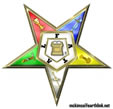
While the Order of the Eastern Star is not part of Freemasonry, many Freemasons and their partners enjoy membership of the Order, and some Lodges are fortunate in benefiting from an association with an OES Chapter.
The Order of the Eastern Star was first introduced into America in 1778 but it made very little progress until 1850 when a prominent Freemason, Dr Robert Morris, brought it into prominence and founded it upon a new basis. When he initially entered Freemasonry Dr Morris was concerned that his female relatives could not share in Masonic activities. With the assistance of his wife, Dr Morris compiled a ritual for a new order. The new order was based upon Biblical incidents and was intended to demonstrate high ideals and principles. It consisted of five degrees which at first were presented as lectures to a gathering of friends. In 1855 the ritual was revised, and with very few changes since then, that ritual is still used today. Governing BodiesThe Order is a world-wide organisation with three governing bodies:
- General Grand Chapter of America
- United Grand Chapter of Australia
- Supreme Grand Chapter of Scotland
The aims and objectives of the Order are:
- To associate in one common bond those admitted to membership and give them a means whereby they can make themselves known to each other.
- To become co-workers in the services of humanity.
- To give comfort in affliction, sympathy in sorrow, and aid in misfortune.
- To “cultivate the social virtues”
Our membership of sisters and brothers can only be drawn from the ranks of affiliated Master Masons, their wives, daughters, legally adopted daughters, mothers, widows, sisters, half-sisters, grand-daughters, stepmothers and step-sisters. The only other requirements for gaining admittance to our order are:
- To express a belief in a Supreme Being
- To be over 18 years of age
- To have resided within the jurisdiction of the chapter being petitioned for membership for at least 12 months
- To have members to propose and second your petition
- To gain a unanimous vote of chapter members to admit you to membership
- Freemasonry is not identical with the Order of the Eastern Star, neither is the Eastern Star Freemasonry, and nor does it profess or wish to be.

